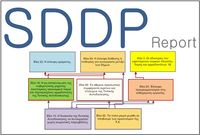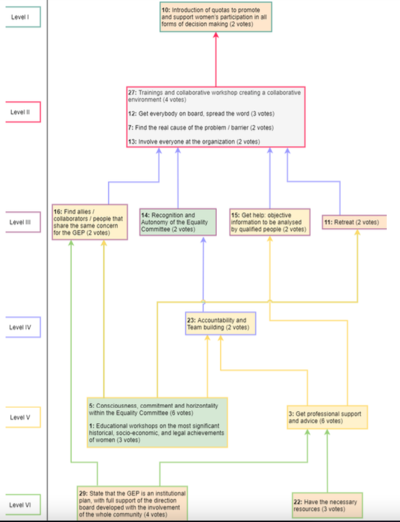R-I-Peers San Sebastian Virtual SDDP Best practices to overcome problems, barriers, issues when implementing your GEPs
|
Executive Summary
The Mutual Learning Workshop “What are the best practices to overcome problems, barriers, issues when implementing your GEPs?” was organised on December 9th, 2020 under the collaboration between the R&I PEERS partners CIC nanoGUNE and the Cyprus Neuroscience & Technology Institute (CNTI). Due to the Covid-19 pandemic and the consequent sanctions and difficulties in travelling abroad, the consortium of the project decided to deliver the workshop virtually through Microsoft TEAMS. Aiming to provide a unique experience to the participants, the workshop started with an opening key-note speech by Dr Petra Rudolf, Professor at the Zernike Institute for Advanced Materials, University of Groningen, Netherlands, who elaborated on unconscious bias under the title “Unconscious bias: how it impacts careers in science and how to mitigate this influence”.
The Triggering Question (TQ) of the workshop was:
"What are the best practices to overcome problems, barriers, issues when implementing your GEPs?"
Generation and Clarification of ideas based on TQ
For the successful execution of this virtual workshop, 9 stakeholders from across Europe directly involved in the design and implementation of GEPs in their organisations accepted the invitation to participate in the workshop. The workshop brought together eight female and one male participant. While five of them were directly involved in the operations of the R&I PEERS project, the other four are dealing with gender equality aspects in their organisations (i.e., three research centres and one research funding organisation). In the first phase of the workshop, the participants were asked to generate ideas to address the TQ “What are the best practices to overcome problems/barriers/issues (administrative, structural, financial, covid...) when implementing your GEPs?”. They came up with a total of 29 practices which, according to their experience, knowledge and expertise, would be helpful in addressing such challenges, which often appear while implementing GEPs in research organisations.
Clustering the ideas
The third phase of the workshop concerned the clustering of the proposed ideas into groups in terms of their similarities and common attributes. In particular, the ideas were compared in pairs in order for the participants to discuss and finally decide whether two ideas should be clustered together (i.e., one idea has enough characteristics with another idea to justify placing them into the same cluster). During the implementation of the clustering phase, the following clusters were identified, which are graphically demonstrated in Figure 2:
In response to the TQ, the 9 participants came up with 29 ideas, which were categorized in 4 clusters.
- Cluster 1: Training
- Cluster 2: Equality Committee
- Cluster 3: Organisational
- Cluster 4: Network
Following the voting process, 20 (out of 29) ideas received one or more votes resulting to a ST of 62%.
Although this is high, one should take into account the small number of participants and ideas, yet all stakeholders received five votes each.
15 were structured to create the influence MAP shown below.
According to the participants of this workshop, the practices that appear to be the most influential were:
Level III, the busiest level of the Map together with Level II, is synthesised by four ideas all of which do not influence each other. In particular, Practice 16: Find allies/collaborators/people that share the same concern for the GEP (P16, V2, C4, LIII) which is influenced by Practice 29 located on Level VI as well as Practices 5 and 1; Practice 14: Recognition and Autonomy of the Equality Committee (P14, V2, C2, LIII) which is directly influenced by Practice 23 located on Level IV; Practice 15: Get help: objective information to be analysed by qualified people (P15, V2, C4, LIII) which is influenced by Practice 3 from Level V; and finally, Practice 11: Retreat (P11, V2, C3, LIII) which is influenced by Practices 5 and 1 located on Level V. Interestingly enough, all the ideas located on Level III significantly contribute towards the implementation of the ideas located on Level II which, as being observed on the Map, share the same box. In particular, Level II hosts the following four ideas: Practice 27: Trainings and collaborative workshop creating a collaborative environment (P27, V4, C1, LII); Practice 12: Get everybody on board, spread the word (P12, V3, C3, LII); Practice 7: Find the real cause of the problem / barrier (P7, V2, C3, LII); and Practice 13: Involve everyone at the organization (P13, V2, C3, LII). Finally, Level I is comprised by only one idea, that is, Practice 10: Introduction of quotas to promote and support women’s participation in all forms of decision making (P10, V2, C3, LI) which is influenced by the ideas deriving from Level II. Therefore, in order to implement this particular idea, an organisation should foremost make significant progress in implementing all the ideas of the Map.

